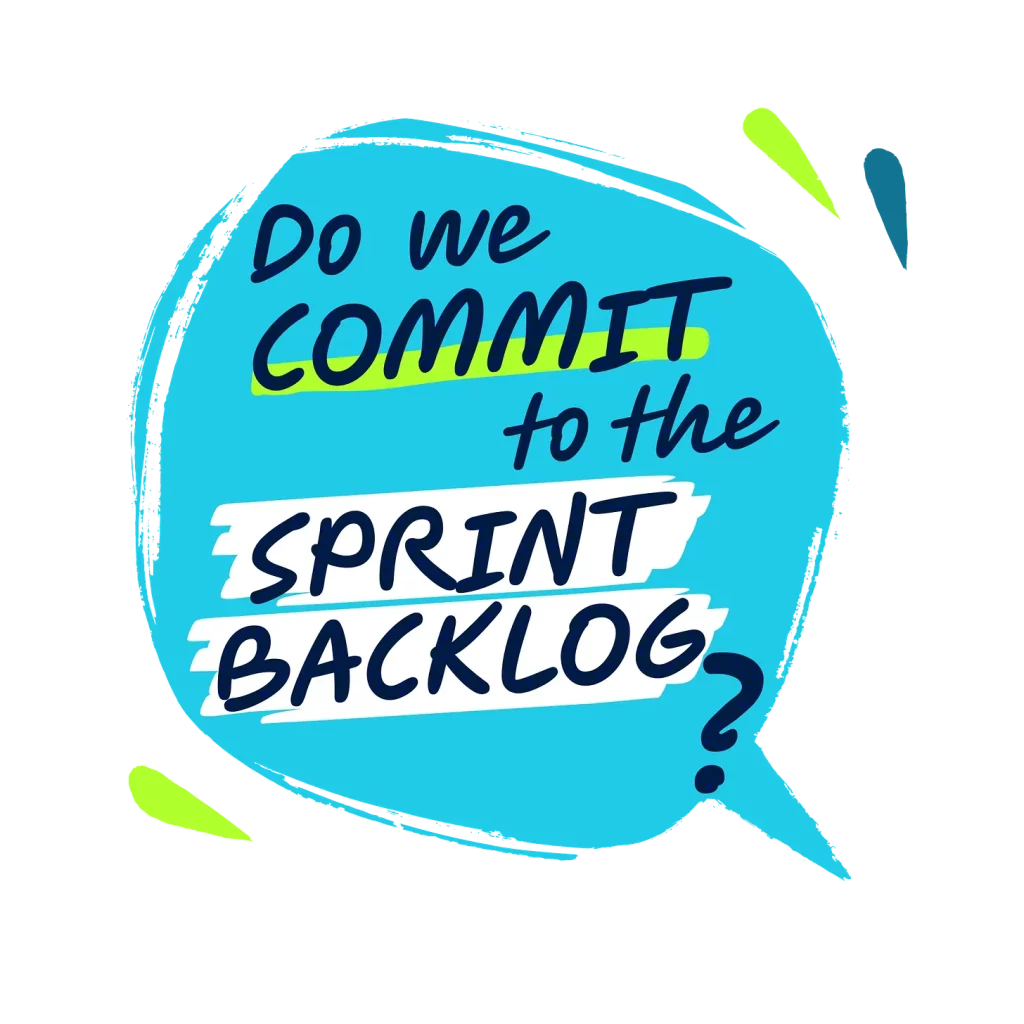No. The commitment for the Sprint Backlog is the Sprint Goal, which enhances the importance of achieving outcomes that deliver value rather than merely completing a set of predefined work items.
Committing to the Sprint Goal rather than the entirety of the Sprint Backlog allows for greater flexibility and adaptability in executing the work.
This approach encourages teams to remain focused on the outcome and the value being delivered rather than being strictly bound to a set of work items.
This commitment to the goal fosters a more outcome-oriented product mindset, crucial for delivering value through a product that meets customer needs and business objectives.
1. Adaptability and Responsiveness:
By committing to the Sprint Goal, teams can adapt their work to achieve the desired outcome. This adaptability is key in a fast-changing environment, where new information or challenges may need a different approach. Committing to the goal ensures that the team remains responsive and can focus on overcoming impediments and capitalise on opportunities.
2. Enhanced Collaboration and Innovation:
Focusing on goals encourages teams to collaborate more effectively and think more innovatively about achieving those goals. It opens the space for creative problem-solving and enables the team to leverage their diverse skills and perspectives to find the best path forward. This collaborative and innovative approach is essential for dealing with challenges and delivering high-quality solutions.
3. Clarity and Alignment:
Committing to the Sprint Goal helps ensure that everyone on the team and stakeholders clearly understands what the team is striving to achieve. This clarity helps to align efforts and facilitates more effective communication and decision-making, ensuring that all work items are directed toward fulfilling the product goal, vision, and business objectives.
4. Value-Driven Delivery:
The commitment to goals underscores the Scrum principle of value-driven delivery. By focusing on achieving specific, valuable outcomes, teams can work more effectively, ensuring they work on the most valuable items. This approach helps to maximise the value delivered to customers and stakeholders with each Sprint.
5. Continuous Improvement:
Goal-oriented commitment also supports the principle of constant improvement. By reflecting on whether goals were achieved and analysing what contributed to the success or challenges faced, teams can identify areas for improvement. This reflective practice, embedded in Scrum events like the Sprint Retrospective, fosters a culture of learning and continuous growth.
The shift towards committing to the Sprint Goal and Product Goal, rather than to the specific items in the Sprint Backlog or Product Backlog, reflects a deeper understanding of agility and the essence of Scrum.
It emphasises the importance of adaptability, collaboration, and a relentless focus on delivering value.
This approach ensures that Scrum Teams are not just completing work items but are truly advancing towards meaningful outcomes that contribute to the success of the product and the satisfaction of the customers and stakeholders.


